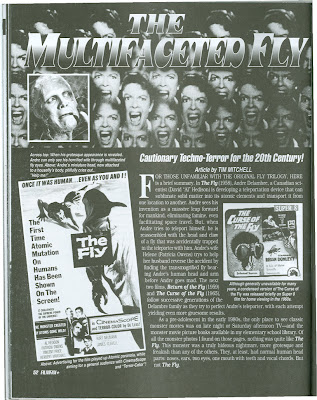Swamp Thing
I never really understood the appeal of this guy, but I used to watch him on Nicolodean's late 70's/early 80's comic book show where they read comic books with sound effects. Definitely low-key for a kid's show, but I loved it (I still hear the theme song of "Flight of the Valkyries" every time I go through the back issues of an old comic store).
From what I understand the comic took a freaky turn after he became a part of the Vertigo line. He's recently returned to the DC universe as the "big reveal" of the Brightest Day storyline.
The Spectre
Ok, so he's not that terrifying to look at, but you'd better believe that when he showed up to hurt you, it was not going to end well.
Jim Aparo took this otherwordly character and made him one serious avatar of justice, having him deal with criminals by cutting them in half with giant scissors, turning them into a wooden statue before cutting it to pieces with a buzzsaw, and having their flesh melt off. Yep, he was someone even Batman thought was too tough on bad guys.
Aparo's entire run can be found in a trade paperback collection that you really want to read. Even though the Spectre today has been turned into a caricature of himself, the Aparo version will make you respect him again.
Deadman
Again, not scary to look at, but how tough must it be to be a superhero no one else can ever see or talk to?
He can possess anyone and has often gotten involved in many JLA adventures and teamed with Batman quite often in the original Brave and the Bold series of team-ups. The thing that really makes him fresh and tragic is the fact that he was the bearer of the White Lantern ring for a while, got to come back to life and be normal again, and then died saving Dove only to become Deadman again rather than have peace in the afterlife. I have to give DC credit on this one: they really did it right for this character in recent books.
Neal Adams' work on this character is unparalleled. While there have been a number of folks who've drawn him, I think Adams still stands as the best.
The Phantom Stranger
While Deadman was the hero no one could see or hear, the Phantom Stranger is the hero no one understands. DC has never (to my knowledge) given this hero a true origin--and I'm absolutely fine with that! Wolverine shall forever stand as a lesson for those who wish to take the mystery man and give him a backstory thinking it will make him interesting. Wrong move, Marvel!
What powers does the Phantom Stranger have? Mysterious magic stuff. Nothing definite, but he can pretty much defend himself against most magic attacks. He appears when needed and disappears immediately afterward. He's never been a regular member of any team, and has pretty much kept the same costume since his first appearance. Like the character, the look is timeless and always a fun read.
Werewolf By Night
Jack Russell (yep, just like the terrier) became Marvel's Werewolf by Night every time the full moon came out (which in the Marvel Universe was whenever he needed to become the monster rather than once a month). And he somehow always wore green pants. I guess he got his clothes from the same color-changing tailor the Hulk got his always-purple pants from.
I don't know how Marvel managed to keep this character going through his own series for so long, but they did. The gimmick seems simple enough--man becomes wolf, doesn't want to be wolf, tries to find cure while not hurting those he loves, etc--yet he found his way working through a number of Marvel titles, helping Spider-Man and even fighting Dracula himself. The title even introduced the world to Moon Knight, who was originally a werewolf-fighting hero.
Ghost Rider
I couldn't finish the list without including this guy, the original Spirit of Vengeance. He suffered a rather less-than-stellar movie adaptation (and a sequel that will at last give every comic fan something they've always wanted to see: Ghost Rider using the bathroom), but the title started out interesting enough.
Ghost Rider was a member of the Champions for the entirety of their existence, and he was a part of the new Fantastic Four along with Wolverine, Hulk, and Spider-Man for a very short bit.
It was very fortunate Johnny Blaze became Ghost Rider. Think of how much less you would respect the hero if his secret identity was Cecil Feather.
The Legion of Monsters
I'm just throwing this in to grab a few remaining ones I missed. Morbius, Man-Thing, Werewolf by Night (as opposed to Werewolf By Day, which isn't nearly as scary) and Ghost Rider teamed up to fight the baddies for an issue of Marvel Premiere.
Give Marvel credit on this one, it was a fun little group. I'm just glad they didn't throw Howard the Duck in there with them.
Now go grab some free candy!
























































